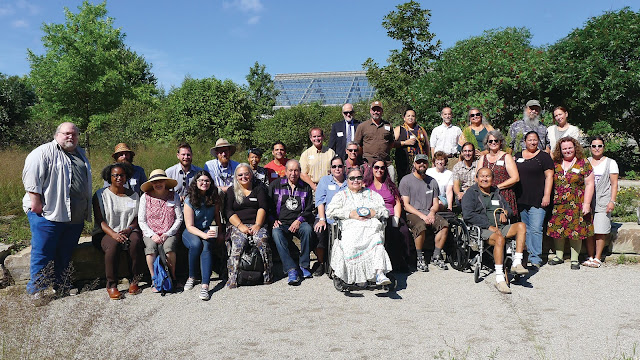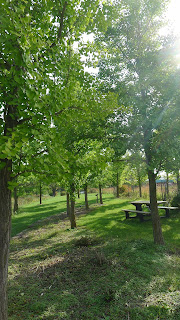All programs take place at
Univ. of Michigan Matthaei Botanical Gardens
1800 N. Dixboro Rd.
Ann Arbor, MI 48105
Programs are free and open to the public unless noted otherwise in the listing.
Tues.,
Jan. 10, 7 pm
Native
Gardens at Home
Presenter:
Ann Arbor Backyard Beekeepers
Matthaei-Nichols
director Bob Grese explores approaches for using native plants in home gardens
and providing habitat for pollinators. In the second half of the program, MSU
research
specialist
Julia Brokaw gives a presentation on mason bees and building
nest
boxes for them.
Wed.,
Jan. 11, 6-7:30 pm
Catching
Your Breath
Presented
by Michigan Alzheimer’s Disease Center (MADC)
A
free monthly program for caregivers of adults with memory loss. Designed for learning
skills for continued health and well-being. Info and to register: 734.936.8803.
Also Feb. 13, March 13, and April 12. For more information visit the
Wed.,
Jan. 11, 6:45 pm
Seed
Cleaning and Exchange
Presenter:
Wild Ones Ann Arbor
Come
and celebrate a new growing season with a demonstration of seed cleaning
techniques (includes ritual fire for the milkweed). Bring your own native plant
seeds to share or just leave with what you need. All welcome.734.604.4674.
Thurs.,
Jan. 12, 2017
NOTE: This is a fee-based program
Ikebana:
Japanese Flower Arranging
Presenter:
Ann Arbor Ikebana International Chapter
Create
your own seasonal Ikebana arrangement with guidance by a certified instructor.
Workshops are the second Thursday of each month from 1:00 - 2:30 in room 125.
Cost is $20.00 which covers flowers and instructor. Reservations required.
Info: a2ikebana@gmail.com.
Mon.,
Jan. 16, 7:30 pm
Wildflowers
of Michigan Nature Association Sanctuaries
Presenter:
Michigan Botanical Club
A
discussion by Michigan Nature Association staff member Rachel Maranto.
Sat.,
Jan. 21, 11 am
Miniature
Orchids
Presenter:
Great Lakes Judging (Orchids)
A
presentation by Great Lakes Judging Center accredited judge Dennis Seffernick
on the growing trend of miniature orchids.












































